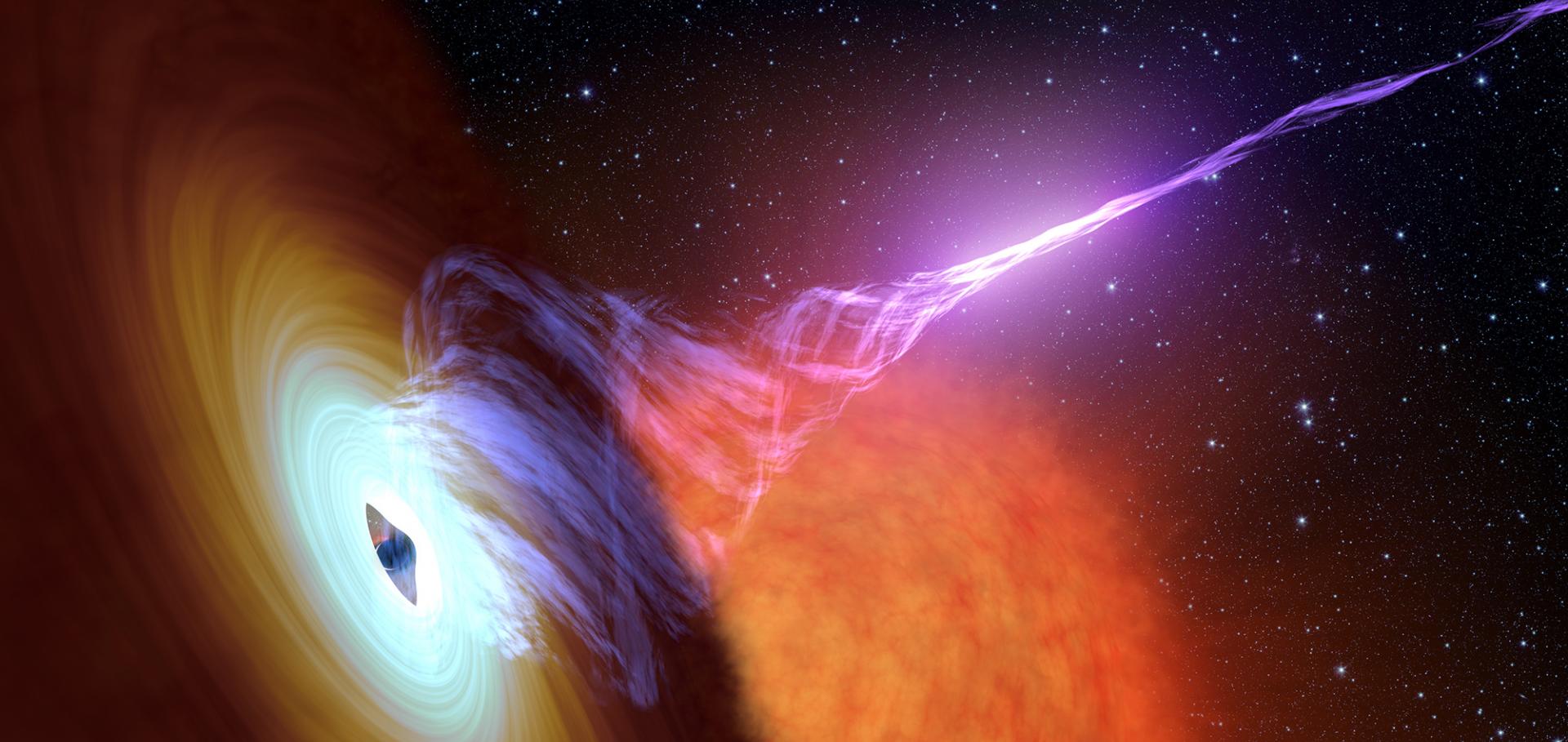MeerKAT observations of white dwarf pulsars
Sissa Medialab Srl (2025) 061
Kinematics show consistency between stellar mass and supermassive black hole parent population jet speeds
(2025)
The First Radio-bright Off-nuclear Tidal Disruption Event AT 2024tvd Reveals the Fastest-evolving Double-peaked Radio Emission
The Astrophysical Journal Letters American Astronomical Society 992:2 (2025) l18
Abstract:
We present the first multiepoch broadband radio and millimeter monitoring of an off-nuclear tidal disruption event (TDE) using the Very Large Array, the Atacama Large Millimeter/submillimeter Array, the Allen Telescope Array, the Arcminute Microkelvin Imager Large Array, and the Submillimeter Array. The off-nuclear TDE AT 2024tvd exhibits double-peaked radio light curves and the fastest-evolving radio emission observed from a TDE to date. With respect to the optical discovery date, the first radio flare rises faster than Fν ∼ t9 at Δt = 88–131 days and then decays as fast as Fν ∼ t−6. The emergence of a second radio flare is observed at Δt ≈ 194 days with an initial fast rise of Fν ∼ t18 and an optically thin decline of Fν ∼ t−12. We interpret these observations in the context of a self-absorbed and free–free absorbed synchrotron spectrum, while accounting for both synchrotron and inverse Compton cooling. We find that a single prompt outflow cannot easily explain these observations and that it is likely that either there is only one outflow that was launched at Δt ∼ 80 days or there are two distinct outflows, with the second launched at Δt ∼ 170–190 days. The nature of these outflows, whether sub-, mildly, or ultrarelativistic, is still unclear, and we explore these different scenarios. Finally, we find a temporal coincidence between the launch time of the first radio-emitting outflow and the onset of a power-law component in the X-ray spectrum, attributed to inverse Compton scattering of thermal photons.Thermal Electrons in the Radio Afterglow of Relativistic Tidal Disruption Event ZTF22aaajecp/AT 2022cmc
The Astrophysical Journal American Astronomical Society 992:1 (2025) 146
Abstract:
A tidal disruption event (TDE) occurs when a star travels too close to a supermassive black hole. In some cases, accretion of the disrupted material onto the black hole launches a relativistic jet. In this paper, we present a long-term observing campaign to study the radio and submillimeter emission associated with the fifth jetted/relativistic TDE: AT 2022cmc. Our campaign reveals a long-lived counterpart. We fit three different models to our data: a nonthermal jet, a spherical outflow consisting of both thermal and nonthermal electrons, and a jet with thermal and nonthermal electrons. We find that the data are best described by a relativistic spherical outflow propagating into an environment with a density profile following R−1.8. Comparison of AT 2022cmc to other TDEs finds agreement in the density profile of the environment but also that AT 2022cmc is twice as energetic as the other well-studied relativistic TDE, Swift J1644. Our observations of AT 2022cmc allow a thermal electron population to be inferred for the first time in a jetted transient, providing new insights into the microphysics of relativistic transients jets.New Metrics for Identifying Variables and Transients in Large Astronomical Surveys
The Astrophysical Journal American Astronomical Society 992:1 (2025) 109


